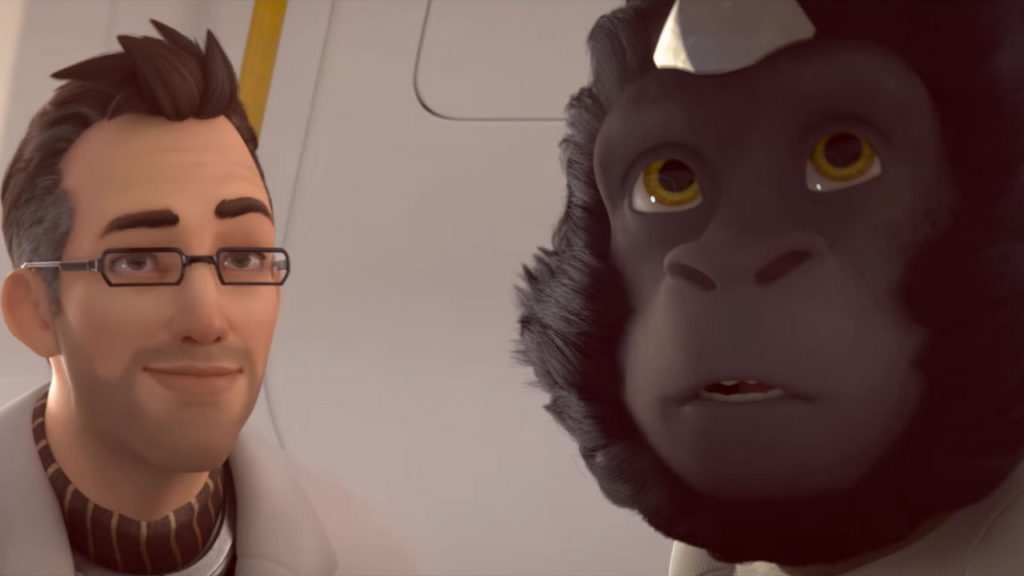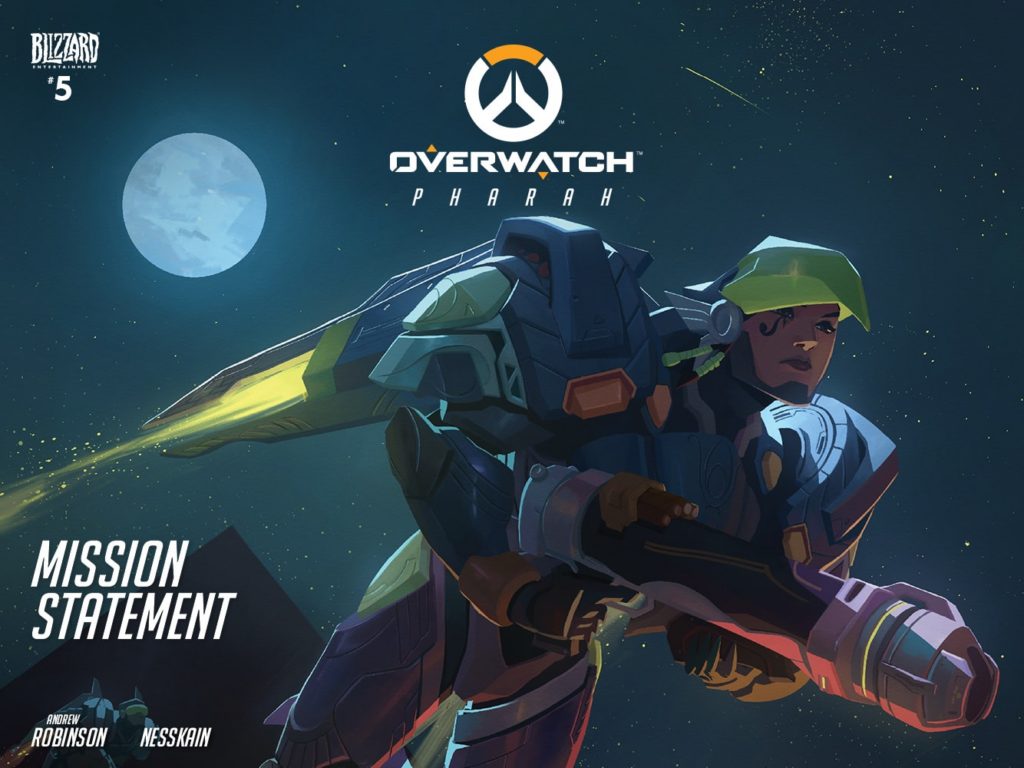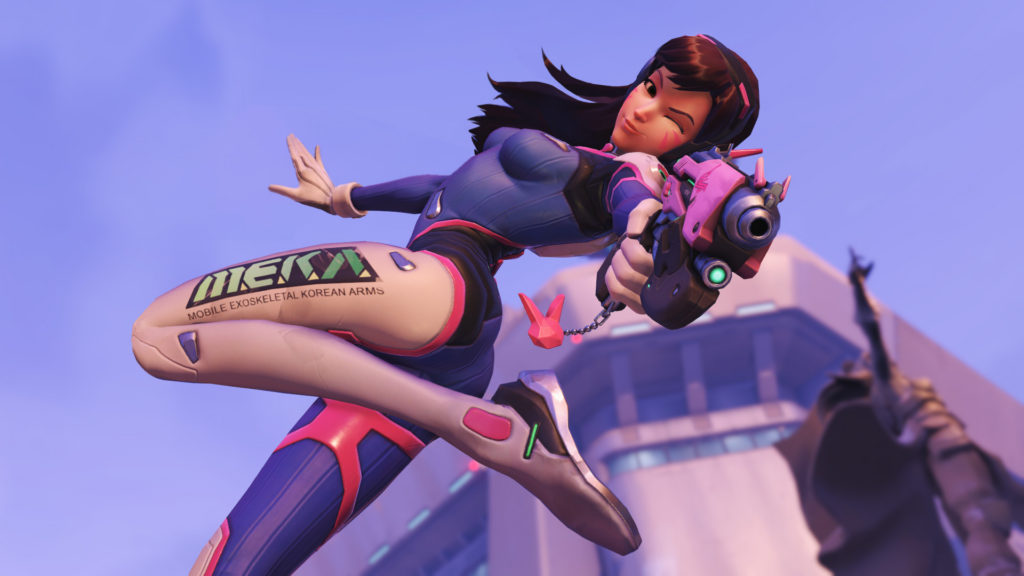Before Winston, a glasses-clad gorilla scientist, was leaping across maps to crush his enemies in the chaotic multiplayer battles of Overwatch, he was merely a young ape with big aspirations and an affinity for peanut butter. But you wouldn’t know that from merely playing the game.
You’ll find no calculated, story-driven campaign in Blizzard’s competitive team-based multiplayer shooter. Overwatch’s character-driven narrative is instead trickled elsewhere: in genuinely endearing animated shorts, character-focused one-off webcomics, and short website-bound character biographies. The latter-most isn’t uncommon within videogames, the second less so, and the first is the most uncommon of them all, the three combined serve as the primary way to tell the story behind Overwatch. What’s significant is that none of these storytelling techniques involve the actual game itself—outside of a minor pre-start menu cutscene explanation— and narrowly avoid the trappings of bland expository lore dumps, as was the case with the repetitive Destiny (2014), and other similar multiplayer-focused games.

In separating the narrative from the game itself, Blizzard’s exercising a new kind of transmedia approach to storytelling. Transmedia storytelling, a phrase originally coined by scholar Henry Jenkins, is the practice of a narrative’s world-building across different platforms. This doesn’t mean sequels. It means literally peppering a story across comics, shorts, or whatever else, just as Overwatch has (and even the Halo series to an extent). “Most often, transmedia stories are based not on individual characters or specific plots but rather complex fictional worlds which can sustain multiple interrelated characters and their stories,” writes Jenkins on a “Transmedia Storytelling 101” blog post. “This process of world-building encourages an encyclopedic impulse in both readers and writers. We are drawn to master what can be known about a world which always expands beyond our grasp.”
When playing Overwatch, the player is absorbed by its radiating positivity. It’s a world filled with lively color and energetic, playful competition, much like Nintendo’s creative kid-friendly ink-shooter Splatoon (2015). The game doesn’t encumber itself with “killing” as so many other grisly shooters do. Additionally, it doesn’t encumber itself with story either. The game is enjoyable without the weight of a narrative shoehorned through it, just as Valve’s similar team-based shooter Team Fortress 2 (2007) did many years before it in the form of its “Meet the Team” shorts. By separating its narrative entirely, the game is given room to focus on its frenetic action at hand.
Overwatch, as we play it, takes place 60 years in the future. About 30 years prior to that point in time, the Overwatch team was initiated, a government-funded group of heroes, organized to fight against the rebellion of Omnics, a type of self-improving sentient robot. A couple decades later, the rebellion had been quashed, “peace” was semi-restored, and Overwatch was made illegal, scattering the many heroes. That’s until ominous characters (namely Reaper and Widowmaker, as seen in the game’s animated shorts) start snooping around, wreaking havoc, and drive Winston to make an impossible call to illegally reinstate his former teammates. Overwatch is back to save the world. Of course, this dense information is gathered nearly everywhere but inside the game itself.

The most common comparison tossed around about Overwatch’s garden variety story is to Pixar’s lovable superhero romp The Incredibles (2004). Yet, it also has a bit in common with Alan Moore’s renowned, dark graphic novel Watchmen (1987). Both The Incredibles and Watchmen tell tales of post-superhero disappointment, wherein being a hero is now outlawed by the government, and former heroes turn to vigilantism, until a new type of war pulls them back in. But where Watchmen excels in its cynicism of the world and governments, The Incredibles and Overwatch flourish in their idealized promises of hope.
Surprisingly, this distant approach to the game’s storytelling feels all too familiar for a different reason. When I think of the games I loved as a kid, they were nearly all colorful action-oriented platformers: Sonic the Hedgehog (1991), Crash Bandicoot (1996), Super Mario World (1990). There was no explicitly-told story between any of these games, but they were all led at the helm by an endearing character or two, and a dastardly evil for them to chase. These are characters that clung to me and that I loved with all my heart as a child.
As with most media as a kid to preteen, when I adored something, I’d always seek out more. It didn’t matter whether it was Harry Potter or emo band-related fan fiction, or anime-cultivated music videos—I always wanted more, more, more. Absorbing a fiction through a lone medium was never a satisfying option. J.K. Rowling, author of that aforementioned boy wizard series, leaped at the chance to expand her universe. With an illustrated and short story-filled site-appendage to the series, several minor book spin-offs, and even a new film adventure in the works, for Rowling, Harry’s story didn’t end with a loving wave from Platform 9 and 3/4s in the Deathly Hallows (2007).
This is the power of transmedia storytelling, and how we consume narratives overall—transcending mere pages and screens. Transmedia storytelling begats the ability to give life to a story beyond its concrete narrative, even trickling it elsewhere in lieu of the primary medium itself, as Overwatch has. Blizzard uses the same universe-building, medium-transcending approach with Overwatch as Rowling does with Harry Potter, reaching far-and-wide to expound its storytelling. Yes, I love playing as Widowmaker, but how about watching an animated short of her battling Tracer in an effort to assassinate an Omnic leader, creating further tension between the two storied enemies? Or reading a comic about a mission of Symmetra’s that goes terrible awry, leaving her with insurmountable guilt over accidentally injuring a bystander? Hell yes.

Overwatch returns that child-like glee of admiring a character for the simpler things: their character design, their cheerful (albeit, sometimes goofy) demeanors, and most of all, how I feel while playing them: confident and happy. Games were an escape for me as a kid, because I could imagine myself as the character themselves, or at least as a friend of theirs. In transmedia storytelling, it’s easy to surround myself completely with whatever medium I admire, fully embracing my “encyclopedic impulses,” as Jenkins once wrote. Overlaying the very textures of my everyday reality with fictional fluff. With Blizzard’s narratorial distance, I’m regranted that innocent pleasure, but luckily without feeling overwhelmed, and given enjoyable side romps for when I want to seek out more.
For now, I like my Overwatch with a side of story. An Overwatch where characters are ripe for kid-like fancying. Like how I may want to be Mercy, keeping a watchful eye on my friends, and healing them at every turn. But in all actuality, I’m probably most like D.Va, charging in without a thought, ready to take on the world no matter its consequences.
